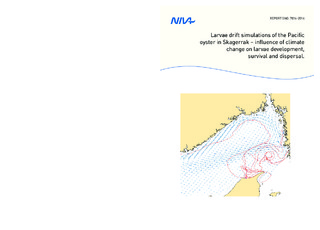Larvae drift simulations of the Pacific oyster in Skagerrak – influence of climate change on larvae development, survival and dispersal
Research report
Date
2016Metadata
Show full item recordCollections
- NIVA-rapporter [7006]
- Publikasjoner fra Cristin - NIVA [2160]
Original version
NIVA-rapport. 22 p. Norsk institutt for vannforskning, 2016Abstract
We have investigated the extent to which warmer climate in recent years has led to greater opportunities for successful spreading of Pacific oyster (Crassostrea gigas) larvae from Danish and Swedish coastal areas to Norway, by simulating larval dispersal and survival using a three-dimensional hydrodynamic model and ocean climate for the years 1990, 1998, 2002, 2006, 2007 and 2010. We have also investigated temporal trends in sea surface temperature in Skagerrak in the period 1990-2014. The main finding is that the temperature increase since 1990 of ca 1.6ºC implies adequate temperature conditions for successful larvae development and transport from Danish and Swedish coastal areas and survival at landing sites along the Norwegian Skagerrak coast in warm years following 2000. The 19ºC temperature isocline in August has moved at least 125 km northwards along the Swedish western coast in Skagerrak since 1990.

